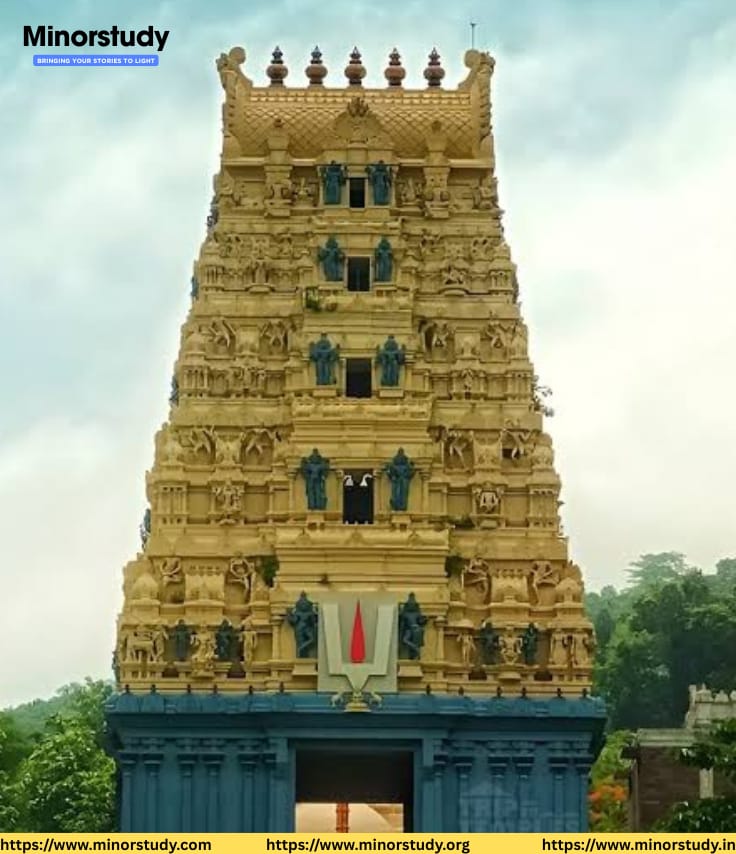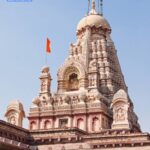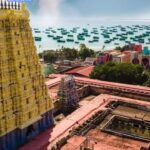🦁 Simhachalam Temple: A Hilltop Sanctuary That Empowers Heart & Mind
Simhachalam Temple: Perched atop Simhadri Hill in Visakhapatnam, Andhra Pradesh, the Sri Varaha Lakshmi Narasimha Temple—better known as Simhachalam Temple—weaves together devotion, architectural grandeur, vibrant rituals, and community devotion. More than a religious site, it exemplifies how spirituality, tradition, ecology, and society can blend harmoniously. In this comprehensive guide, we explore its history, compelling facts, timeline, sacred significance, rituals, importance in daily and societal life, plus helpful FAQs and a heartfelt conclusion.
- 🏰 History & Architectural Journey
- 📆 Timeline of Key Milestones
- 🔍 Top 7 Fascinating Facts
- 🙏 Significance & Spiritual Essence
- 📿 Daily Rituals & Significant Festivals
- ❓ FAQs
- Q1: When is the temple open and what are darshan options?
- Q2: Is it accessible for elderly or disabled devotees?
- Q3: When to visit for peace & fewer crowds?
- Q4: How to reach and where to stay?
- Q5: Why is sandal paste used?
- 🌱 Personal & Societal Significance
- 🎉 Wishing Blessings to All Devotees
- 🌞 Daily Life Impacts
- 🏁 Conclusion: Simhachalam—Where Power Meets Peace
🏰 History & Architectural Journey
Foundations in Legend & Antiquity
Simhachalam is dedicated to Varaha Lakshmi Narasimha, the fierce yet compassionate incarnation of Lord Vishnu—part boar, part lion-man—who saved Prahlada and Earth from evil tripadvisor.com+15en.wikipedia.org+15vizagtourism.org.in+15. According to lore, Prahlada’s miraculous rescue occurred where the temple now stands, embedding divine energy in its very soil .
Karuna sequential: The central figure of mixed manifestation—varaha-narasimha—stands as a symbol of strength with compassion.
Historical Construction
9th century: The Chalukya-Chola era left inscriptions affirming its existence lucky-vagabond.com+1swarajyamag.com+1.
13th century: Rebuilt by Eastern Ganga ruler Narasingha Deva I; consecrated 1268 CE famoustemplesofindia.com+8en.wikipedia.org+8swarajyamag.com+8.
Vijayanagara & beyond: It received patronage from subsequent dynasties, enriching its structure and rituals routefinder.in+2swarajyamag.com+2famoustemplesofindia.com+2.
Architectural Splendor
Simhachalam Temple is a fusion of Kalinga (Odisha) and Chalukyan design, featuring dark granite mandapas, ornate pillars, and detailed mythological carvings xploringdestinations.com+9amaragroup.net+9routefinder.in+9. Its entrance towers rise against the lush backdrop of the Western Ghats, evoking both spiritual and natural grandeur.
📆 Timeline of Key Milestones
| Era | Event |
|---|---|
| 9th c. | Earliest references linked to Chola-Chalukya kings tripadvisor.com+15lucky-vagabond.com+15swarajyamag.com+15 |
| 13th c. | Rebuilt by Narasingha Deva I, consecrated 1268 CE |
| Vijayanagara period | Received significant upgrades and patronage |
| Modern era | ISO 9001:2015 certification for quality services |
| Recent | ₹242 crore renovation plan in phases |
| Annually | Chandanotsavam (Akshaya Tritiya) and Giripradakshina events |
🔍 Top 7 Fascinating Facts
Varaha-Narasimha Hybrid Deity: Richly symbolic blend of boar and lion-man, denoting fierce protection and compassion famoustemplesofindia.com+1hindupost.in+1.
Sandalwood Veil: The deity is covered in sandalwood paste year-round to protect devotees from its intense brilliance—removed only on Akshaya Tritiya thevizag.com+11amaragroup.net+11famoustemplesofindia.com+11.
West-Facing Springs: Unique for being west-facing, harmonizing with five natural springs meeting 80% of the temple’s water needs timesofindia.indiatimes.com.
Sacred Giri Pradakshina: Pilgrims walk a 32-km route around the hill, invoking the 32 forms of Narasimha—a prayer for children and blessings xploringdestinations.com+3news18.com+3timesofindia.indiatimes.com+3.
Architecture Marvel: Combines Orissan vimanas and Chalukyan pillars depicting stories and deities—a pilgrimage in stone routefinder.in.
16-Pillar Dance Hall (Natyamandapam): Supports rituals, festivals, and marriages with an array of colour and sound amaragroup.net.
Eco-spiritual Integration: Springs and herbal flora on the hill play roles in ritual cleansing and pilgrims’ faith journeys .
🙏 Significance & Spiritual Essence
Divine Protection: The deity represents how the divine acts imperceptibly to shield the righteous.
Healing & Fertility: Devotees seeking health, children, and mental peace often pray here, especially during Giripradakshina famoustemplesofindia.com+4news18.com+4hindupost.in+4.
Vedic-Agama Worship: Rituals follow Pancharatra Agama traditions like those at Tirupati and Kanchipuram, showcasing continuity of ancient worship en.wikipedia.org+1routefinder.in+1.
Community & Culture: Festivals like Chandanotsavam, Kalyanotsavam, and Teppotsavam are intertwined cultural gatherings timesofindia.indiatimes.com+4hindupost.in+4amaragroup.net+4.
📿 Daily Rituals & Significant Festivals
🕔 Daily Services
Early morning start with Suprabhatam followed by Laghuarchana, Mangala Harati, Abhishekam, and Baliharana rituals until 8 AM en.wikipedia.org.
Midday Rajabhoga offering; darshan pause followed by evening Divviti Salam and final Sayana Seva at 9 PM en.wikipedia.org.
🌸 Major Festivals
Chandanotsavam (Akshaya Tritiya): Sunderspaste removed—deity visible in original splendor xploringdestinations.com+8amaragroup.net+8hindupost.in+8.
Kalyanotsavam (Chaitra): Celestial wedding of the deity across five days myoksha.com+4hindupost.in+4amaragroup.net+4.
Narasimha Jayanti: Celebrating Narasimha’s appearance to protect Prahlada revv.co.in+6hindupost.in+6en.wikipedia.org+6.
Giri Pradakshina (Ashadha Purnima): 32‑km walk around the hill, attracting 3‑4 lakh devotees annually famoustemplesofindia.com+5news18.com+5timesofindia.indiatimes.com+5.
Teppotsavam (Float Festival): Idol crowns the temple tank for devotees to sanctify themselves holidaysdna.com+3xploringdestinations.com+3en.wikipedia.org+3.
Jyeshtha Pournami: Sandalwood fragrance offerings and Vedic ceremonies mark spiritual ambiance reddit.com+2thevizag.com+2xploringdestinations.com+2.
❓ FAQs
Q1: When is the temple open and what are darshan options?
A: Open daily from 7 AM–4 PM and 6–9 PM. Three tiers of darshan: free, ₹100, and ₹300 for garbha‑guddi access .
Q2: Is it accessible for elderly or disabled devotees?
A: Yes! A lift is available near the gopuram for senior citizens, pregnant women, and differently-abled individuals .
Q3: When to visit for peace & fewer crowds?
A: Early morning (6:30‑11 AM) or post‑3 PM on weekdays—Mondays are least crowded .
Q4: How to reach and where to stay?
A: 10–18 km from Visakhapatnam airport/railway; reachable by bus (6A, 28, 40, 55). Lodging includes hilltop cottages & choultries .
Q5: Why is sandal paste used?
A: To shield devotees from deity’s radiance; paste is made carefully with sandalwood, camphor, saffron—gradually applied during rituals .
🌱 Personal & Societal Significance
Personal Transformation
Mental calmness: Rituals and pilgrimages foster inner peace and devotion.
Health & fertility blessings: Popular among couples seeking progeny and individuals recovering from illness news18.com+1vizagtourism.org.in+1.
Humility & duty: Upholding traditional dress codes and rituals cultivates humility and mindfulness.
Societal Contributions
Cultural continuity: Sustains Vedic practices, local arts, music, architecture.
Economic support: Tourism, festivals, and local businesses thrive through pilgrim influx.
Environmental stewardship: Water springs and greenery promote ecological respect and sustainable upkeep .
🎉 Wishing Blessings to All Devotees
“May the boundless courage and compassion of Lord Varaha Narasimha steel your spirit, bestow health and joy, and light every path you follow. Jai SRI Simhadrinatha!”
🌞 Daily Life Impacts
Resilience under fire: Emulating Narasimha’s protective courage inspires resolve.
Mindful devotion: Participating in everyday rituals enhances discipline.
Inclusivity in access: Lift access and tiered darshan deepen social empathy.
Cultural rootedness: Following dress and custom fosters identity and belonging.
Eco-conscious living: Caring for springs and flora sparks environmental awareness.
🏁 Conclusion: Simhachalam—Where Power Meets Peace
Simhachalam Temple is more than stone and prayer—it’s a living testament to divine justice, compassion, and resilience. It offers a chance to experience spiritual opulence, community warmth, ecological harmony, and personal transformation in one journey.
“In Simhadrinatha’s roar lies the protection of ages; in His silence, the peace your heart has always hungered for.”








